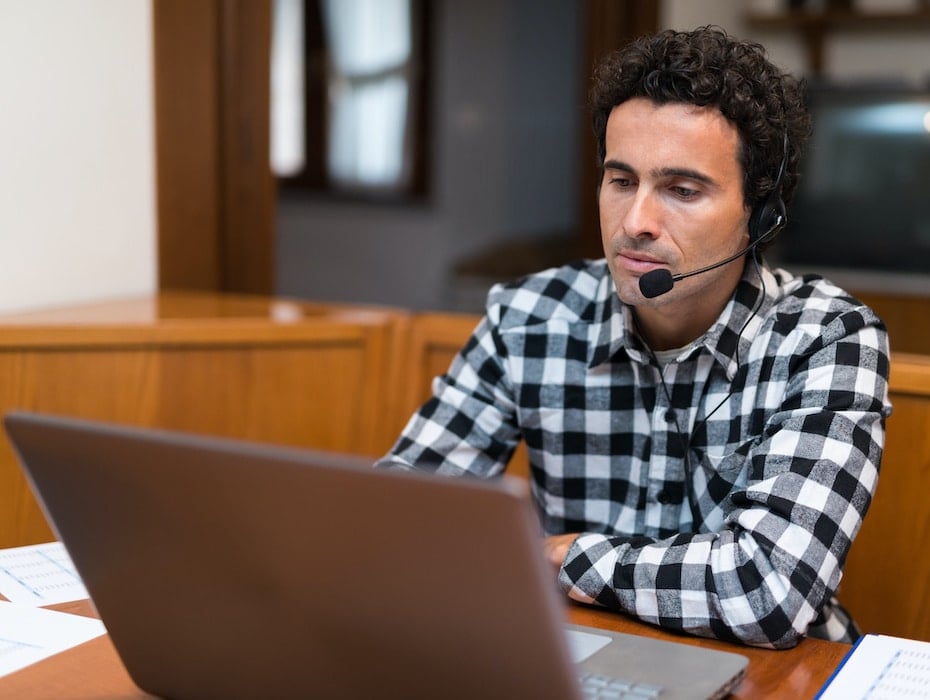My daughter is a nurse practitioner in Chicago. Just last week she learned that two of her close co-workers tested positive for the coronavirus. The next thing she knew she had a swab up her nose and was sent home to await the results.
She was brave and philosophical about it all. She’s young and healthy, as is her husband and one-year-old son. While this horrible virus is certainly not something she wanted in her life, she was ready to face it. Luckily, because she knew she’d been exposed, she was able to isolate herself and keep others who are more vulnerable protected.
She just experienced contact tracing. Her experience won’t be unique over the next several months—if not years. Like her, many of us will run into someone who has the coronavirus. The goal of contact tracing is to identify, isolate, and test anyone who is exposed to the virus as quickly as possible so they don’t unwittingly spread the disease further. Contact tracing teams are being formed around the country now to find and test as many exposed people as possible, to stem the spread of the disease.
Why is speed so important for contact tracing?
An important element in contact tracing is speed. The sooner contact tracers can reach out to potentially infected individuals, the sooner they can quarantine them. Especially now, as our world starts to reopen, an infected person will have ample opportunity to infect others. A ride on a subway or a trip up an elevator can become hazardous if an infected but asymptomatic person is part of the mix.
In my daughter’s case, it was easy to find her. She worked in the hospital where she’d come in contact with someone who’d contracted the virus. But what about all the others this infected person had spent time with—friends, family? How do we reach them before they take that ride on a crowded subway car?
How can contact center technology make contact tracing more successful?
Contact center and unified communications technology can offer a solution to this crisis. With click-to-dial and APIs for integrations, these tools are designed to make communications faster and more efficient, which is critical to the success of any contact tracing effort.
A cloud-based communications system allows tracers to work from home or the road. Another benefit: the ability to mix SMS and voice interactions increases the chance of making a connection. In some cloud communications systems, users can also quickly shift from text communications to audio or even video with one click, making difficult conversations easier to manage. Reporting and analytics provide key value and accountability, as well.
How dialers can make contact tracing faster
When it comes to contact tracing, perhaps the most critical feature of contact center and unified communications solutions is the dialer. For large teams of contact tracers who manage tens of thousands of contacts across hundreds of tracers, dialers can make the biggest difference of all. In many ways, they’re the cotton gin of the 21st-century customer engagement industry. Instead of requiring a massive number of people to slog through the painful and demoralizing work of dialing numbers that never get answered, dialers do the heavy lifting through automation.
Primarily used in sales or collections today, dialers are designed to contact the greatest number of people in the least amount of time with the fewest resources. Some of the key capabilities of dialers include:
- Reaching out: When you feed a dialer a list of names and numbers, the system automatically starts making calls or sending SMS messages. It handles the dialing and ringing process, and identifies busy signals or any other case where the call didn’t go through. Once someone picks up on the other end, the system plays a message or immediately hands off to a live person to start a conversation.
Without dialers, contact tracers could easily spend 75% of their time manually dialing and only 25% of their time speaking with individuals. With dialers, however, they could flip that equation, a productivity increase of 300%.
- Campaign and list management: With dialers, you can set up rules for how often to call a contact, what time of day is appropriate to call, and how many times to retry if you don’t reach someone. The system automatically makes sure everyone gets the right number of attempts and provides all the necessary reporting and management.
- Speed to connect: Dialers also have the APIs and connectivity options to allow the fastest possible connection speeds.
The FCC has published guidance on calls regarding imminent health issues related to COVID-19 (such as contact tracing calls). These calls have been granted an “emergency purposes exception” from TCPA and other privacy regulations.
How can automated dialers speed up contact tracing?
To get an idea of just how dramatically dialers can improve the speed of contact for contact tracers, consider this example from the financial services industry. In the mortgage industry, the first company to contact the customer often gets the loan. Wyndham Capital utilized a dialer to increase its success working with loan aggregators such as Lending Tree.
Wyndham set up its dialer and tuned its processes to make sure the company was the first to reach out to customers anytime a qualified lead was passed to them from Lending Tree. Wyndham now contacts 80% of its leads within 10 seconds of when the lead gets shared. The ability to do this across several aggregator platforms has significantly improved Wyndham’s close rates on loans. This type of power and speed could significantly improve contact tracing.
How RingCentral can help build faster, better contact tracing
Contact tracing is all about speed. Getting online and making connections quickly, as well as identifying and isolating potential carriers as quickly as possible, will be the key to minimizing the impact of COVID-19. RingCentral is committed to providing the communications, contact center, and dialer capabilities to the contact tracing organizations that need it the most. Learn more about RingCentral for Contact Tracing today.
Originally published May 20, 2020, updated Dec 30, 2022





